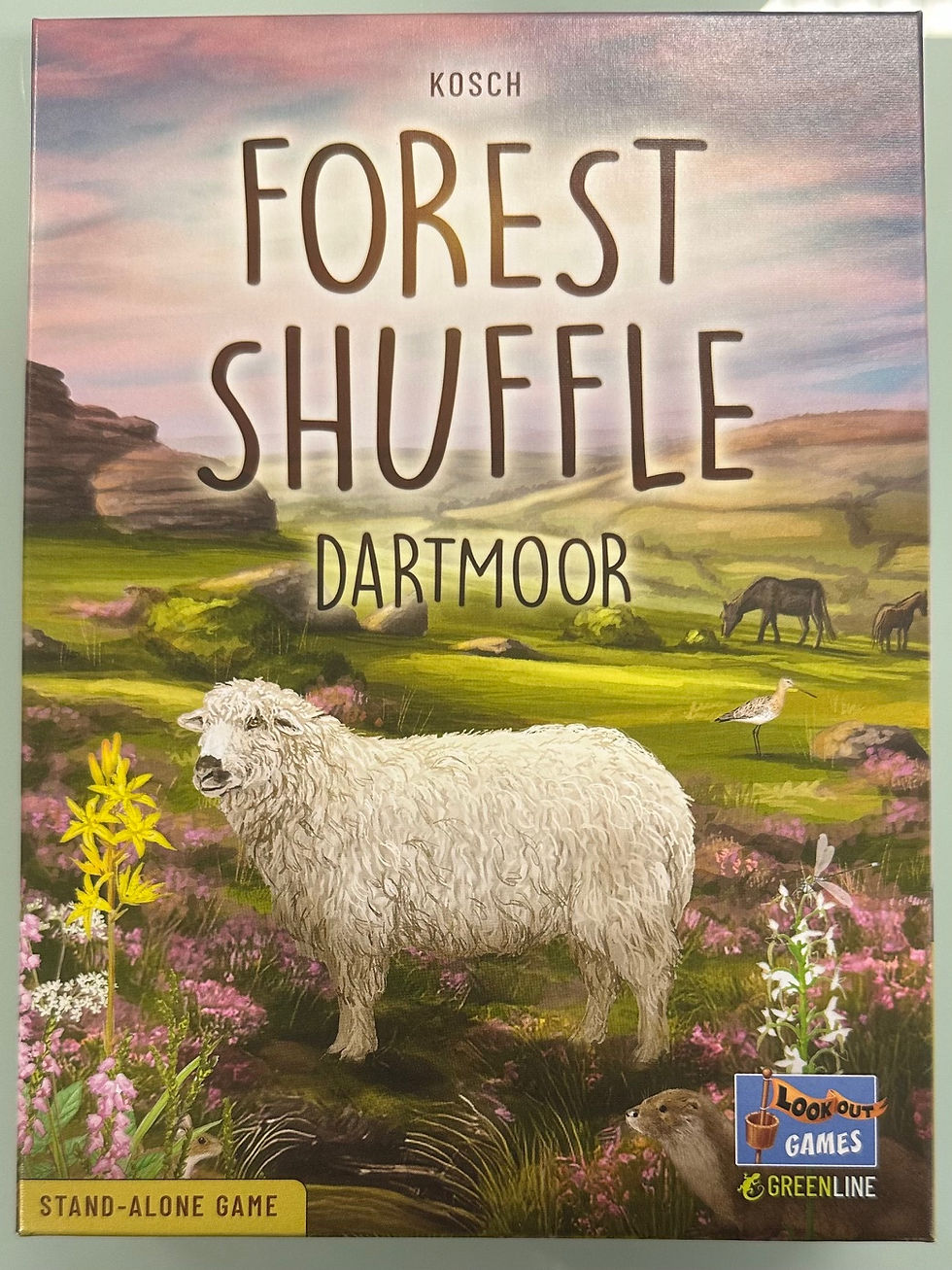That Old Wallpaper
- Board's Eye View

- Dec 28, 2022
- 3 min read
That Old Wallpaper is a 2–5 player pattern building card game played over three rounds (18 turns apiece) where players are collecting cards from a market display to piece together to form matching pairs. The cards all have half a large pattern on their long sides and half a small pattern on their short sides. At the end of the game, you’ll only score for each pair of completed large and small patterns of each colour.

The design by Danielle Deley and Nathan Thornton uses a blind bidding mechanic. Players each have a deck of 10 numbered bidding cards, tho’ they only have five of those cards in hand at the start of each turn. Who gets which card in the market display row is determined by the number each player plays as their face-down bid. If you want to draft the card at the low end of the row, you’ll play a low number; likewise you’ll play a high number to try to get the card at the high end. Of course, who actually gets what is dependent too on what numbers others play. You may think your 8 is a high number that will secure you the card at the high end of the row but other players might play 9 or 10… And if two or more players play the same number, only one of them gets to take the card at the location their numbers place them (determined by their priority in a token pecking order); the other(s) don’t get any cards from the display but instead get a consolation ‘hazy memory’ card that can be used at the end of the game as a wild to complete any large or small pairing.
The blind bidding makes for an interesting if sometimes frustrating game: if you are particularly keen to get a card in one of the middle positions in a row, it’s often largely a matter of luck whether your choice of number will deliver it for you. You don’t know what numbers players have in their hand until the last turn in a round, tho’ you can see, of course, what numbers other players have used in previous turns. Arguably that gives players a little more guidance on where the numbers they place will end up in relation to those of other players.
Because of the rules on duplicate bids, there may well be cards that go unclaimed. These carry forward to the next round so there may be positions in a row that have more than one card. Some cards have a red oval symbol in the centre. When one of these appears in a row, another card is immediately placed out below it (so, again, an extra card for that position). The reason for this is that there is an end-game scoring penalty for the player with the most oval symbols and a bonus for the player with the fewest. There are other symbols on cards too. These give end-game scoring bonuses.
With art by Matt Paquette & Co., AEG have put together an attractive package. The bidding system makes for an enjoyable but somewhat random game where you can rarely be sure of drafting the specific card(s) you are after. That means That Old Wallpaper is likely to appeal more to ‘non-gamers’ than seasoned gamers more used to strategic play. That Old Wallpaper is certainly very suitable as a family game – tho’ some may find the round structure just a little more complicated than it needs to be. The box includes a pad of colourful score sheets for players to record their scores but you'll soon run out of these sheets, especially if you usw one for each player. We recommend laminating some sheets so you can use and reuse them with dry-wipe pens.




